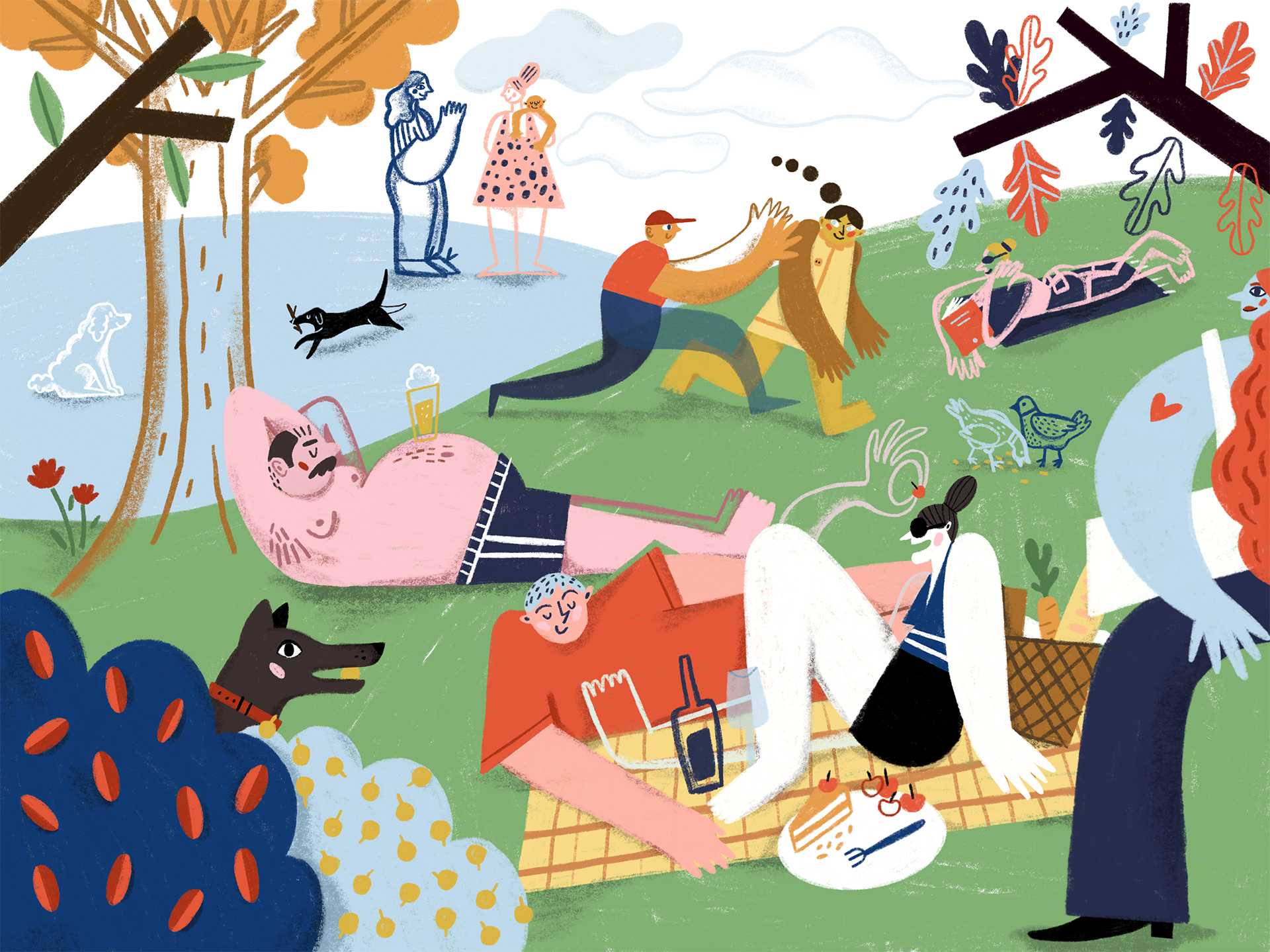Sensitive, honest, and genuine with a touch of irony and humor. In her work, alongside everyday situations, Hungarian folk traditions and questions of motherhood are also brought to the table. We talked with Dorottya Kránicz, illustrator and journalist.
Working both as a journalist and an illustrator—you are getting more and more requests in your latter profession. Tell us about the beginning; how did this story start?
I loved drawing and writing from a very young age, therefore I had these two career paths running before me side by side for a long time. Finally, under family pressure, I went to a liberal arts college and got a degree in film studies, but in the meantime, I never gave up drawing completely: I kept attending all kinds of workshops regularly, and then, in addition to ELTE, I completed the new media graphic design course at the Budapest Metropolitan University. I started working as a journalist during my university years, first at the Prizma Filmművészeti Folyóirat and Origo Filmklub, and then, after leaving the film industry, I got a job at Marie Claire. Fortunately, my contacts from journalism were also stepping stones into illustration: web designer Gábor Farkas, one of the editors of Prizma, was probably one of the firsts to see the potential in me—we later did restaurant design, and book covers together—and then Marie Claire’s visual design team gave me the confidence to try myself in magazine illustration. Writing took up the biggest chunk of my time for a long time, but now illustration is just as important. The good thing about the freelance lifestyle is that I have a great deal of control over the share of work I take on from the two areas, and as I have more incomes, I can afford to do something I do with sincere enthusiasm. I feel this is an amazing luxury because I don’t have to get bogged down in either image design for a living or the constant production of news.
I now organize my time by working on one or two major topics a month for Magyar Narancs and HVG, and I also have a permanent job as an editor at Marie Claire. I also do illustration work, and if all goes well, I even have time for my own projects.
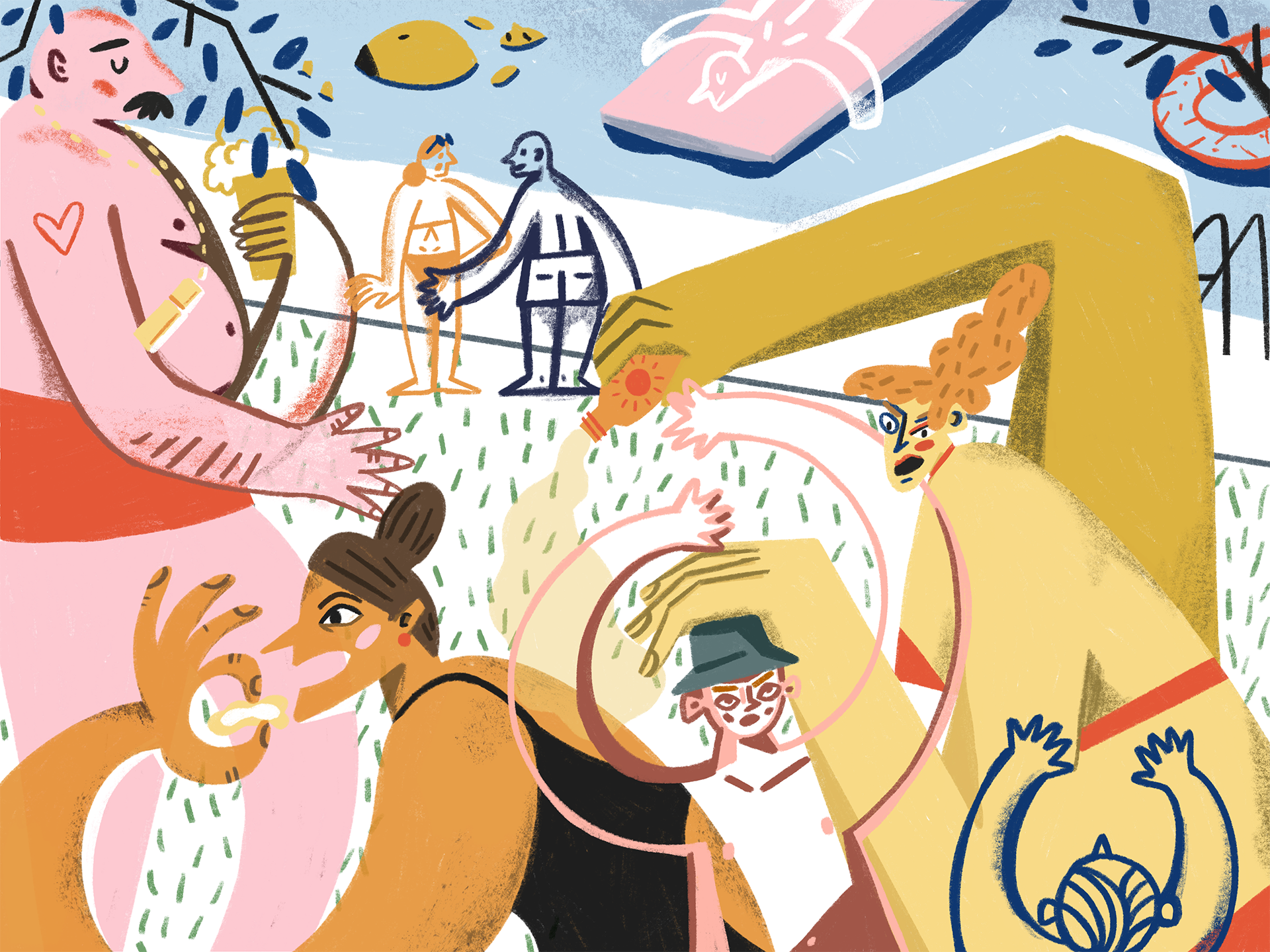
As you have mentioned, illustration is now as much a part of your everyday life as writing. What has brought you to this turning point?
In hindsight, it’s difficult to judge what the turning point was if there was one, because this career has been built rather gradually, organically. For sure, drawing was more of a hobby for quite a long time, and I mainly did it through friends, but as time went by, I started sharing more and more of my drawings on Instagram, and I got a lot of positive feedback. My little daughter was born a year and a half ago, and at that time, drawing was not only a recreational activity, but it also had an identity-building power: it reminded me that I had an inner world beyond motherhood, that I had creativity and creative power beyond giving life. Plus, with a little baby, you have plenty of free mental capacity—while my body was more tired than ever, I walked hours in the open air every day with my sleeping daughter and my thoughts. It was both exciting and shocking to experience how much better my brain performs when it gets out of the daily grind. During this time, I shared more and more of my drawings on my Instagram page and had more time to polish my style—that’s when the commissions started to multiply.
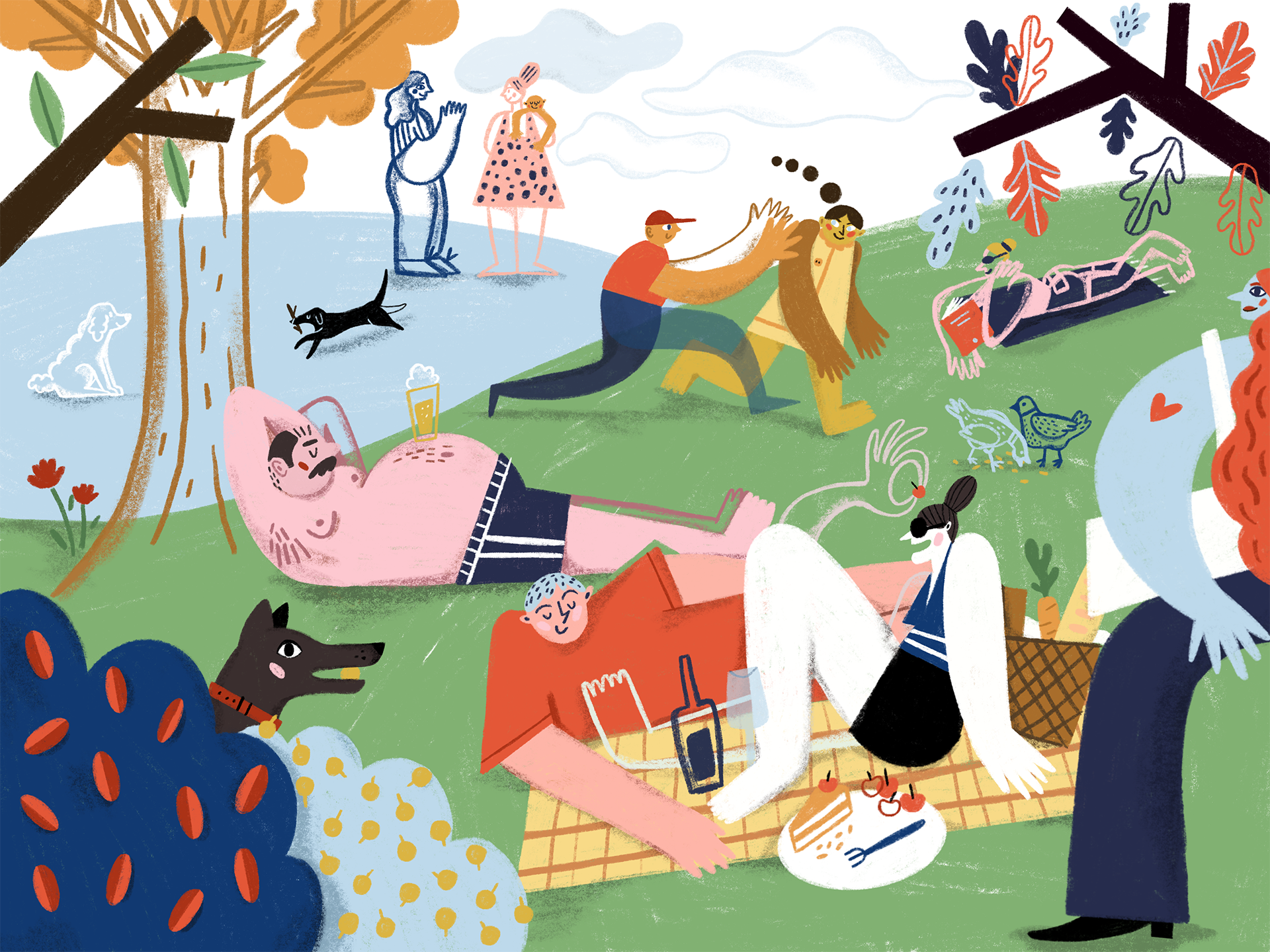
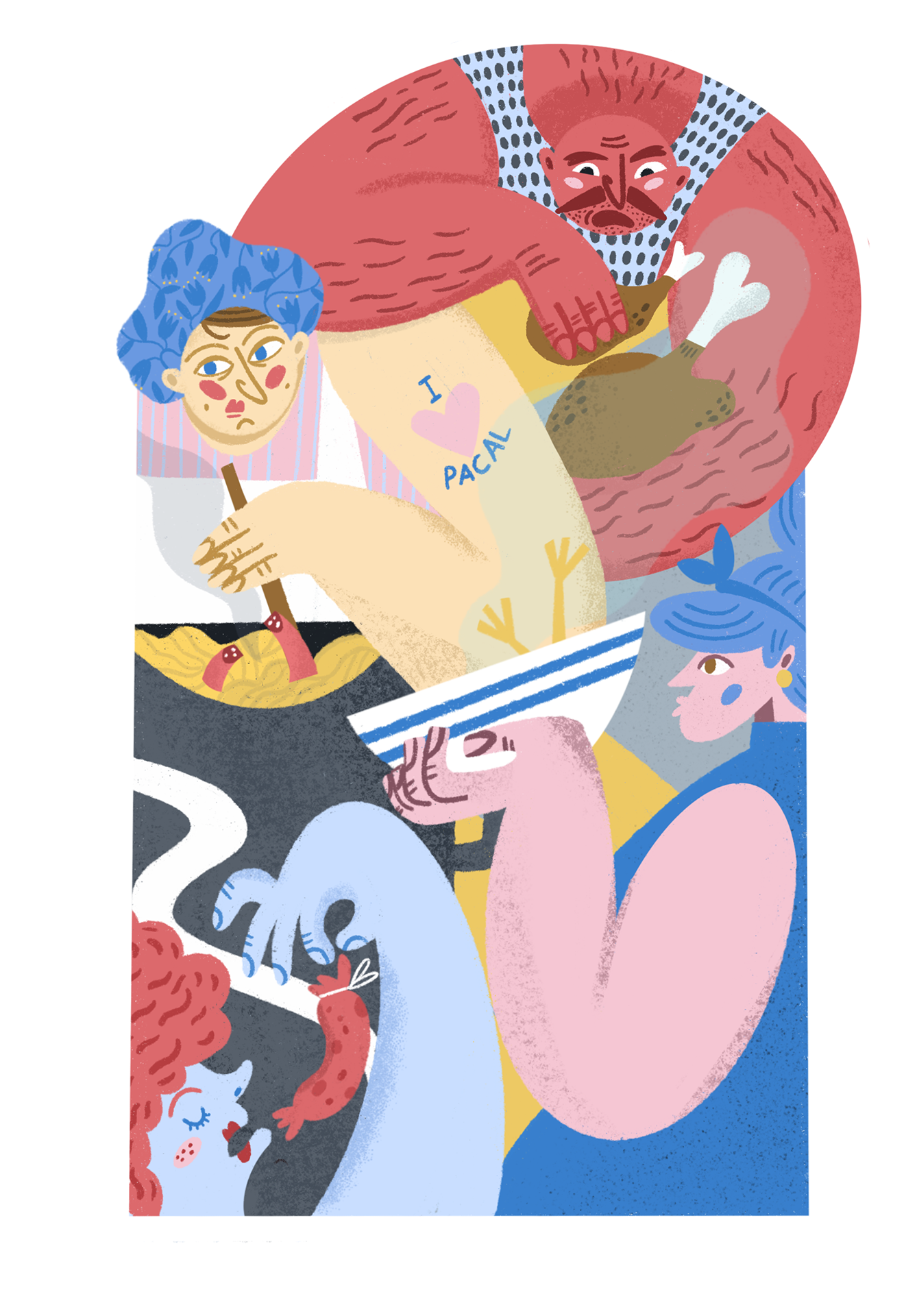
Your illustrations include everyday scenes as well as situations and characteristics of Hungarian traditions. How have your main sources of inspiration changed over time; what concerns you most right now?
I’d say I’m thinking much more consciously about these things now. I’ve come to love the series format because it allows me to explore a topic in more depth: most recently, for example, I was engaged in the mass activities that disappeared due to the coronavirus and their potential for connectivity, and I drew a series from that. In general, I am also interested in women’s roles and the characteristics of women’s existence, with particular reference to questions of motherhood, or the philosophy of consciousness, the interaction between internal processes, social and power structures.
Currently, we are working with my ethnographer friend Szilvi Bobák on a publication about Hungarian folk customs, but I am also preparing a postcard collection and a calendar for children. Unfortunately, I have far less time for these besides my work.
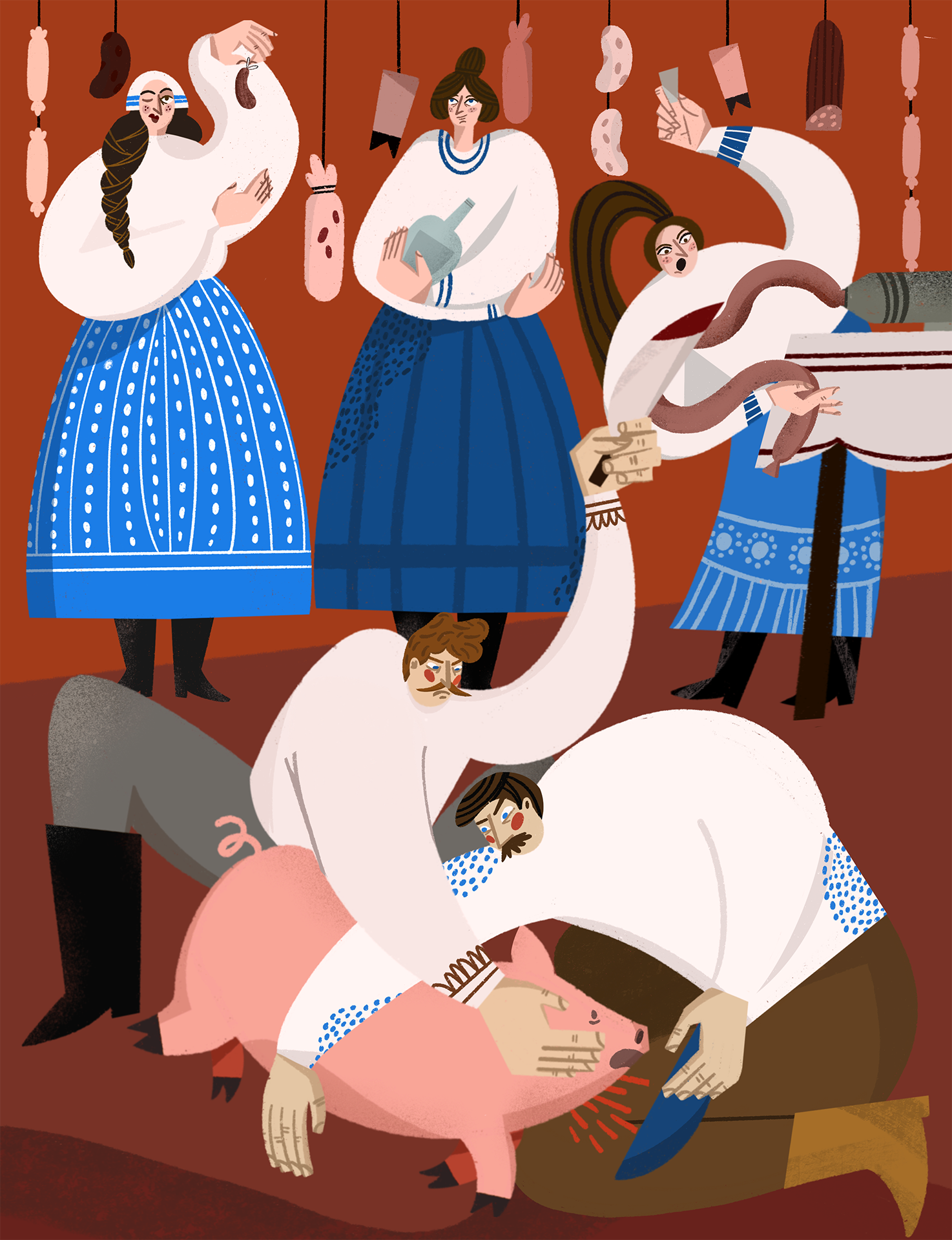
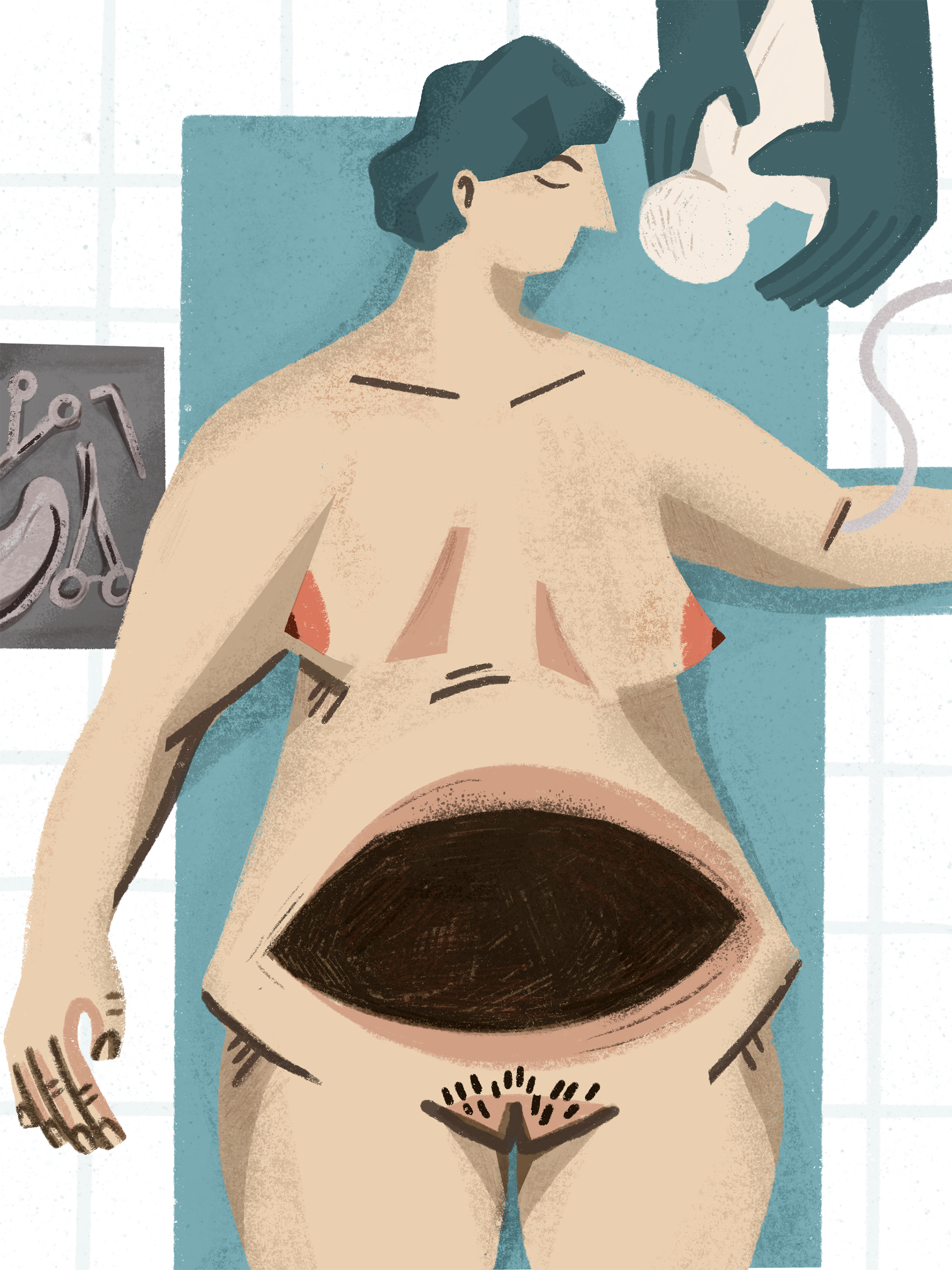
As you have highlighted, motherhood runs through your work as a major motif: are you focusing on your personal experiences or general issues and questions about the topic? How much do you see your drawings as therapy?
I think all creation is also, by its very nature, a therapeutic process for the creator. Motherhood is a tremendous change in a woman’s life, and it takes everything else out of our minds during pregnancy and birth. It’s scary on the one hand, and you might think it reinforces many damaging narratives, but for me, it was really good to experience it, especially knowing that it was just a transitional phase in my life. At this time, women who used to work as economists, nuclear physicists, or hairdressers are just as concerned about whether they have enough milk and how surreal and wonderful it is to hold this little creature they have grown in their bodies for nine months. These are unique experiences in everyone’s life, yet they create a universal connection between women, and I think that’s beautiful.
Your illustrations have appeared on various book covers and in Marie Claire, and one of your most recent commissions came from Nestlé. Tell us about the campaign!
I was pleased to be approached by Nestlé and the Feat. Agency, who ran the campaign. The campaign aimed to use honest drawings to talk about the toddler years rather than the often depressing, idealized image. For this, a survey was prepared beforehand, in which flesh-and-blood parents told us about their fears and insecurities: these gave insights that were then used to get advice from a nurse. During the working process, we talked a lot about the difficulties of parenthood and tried to create loveable, funny illustrations that many parents will be able to connect to.
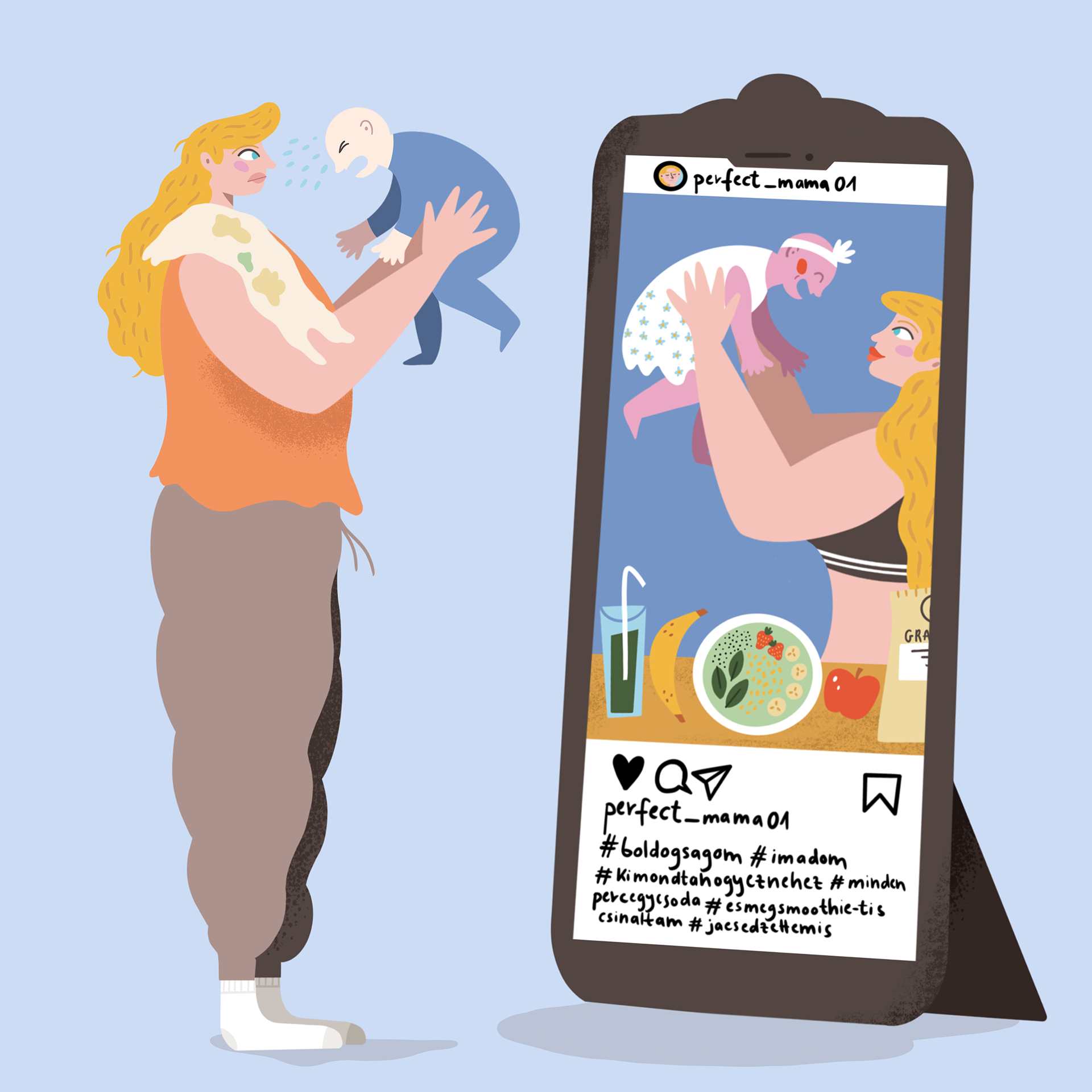
You have also created sensitizing illustrations for the SIN Arts Centre’s Gránátalma Klub program—you list this collaboration as one of your favorite projects. What was your experience here?
The identity for the Gránátalma Klub was, I think, both cool and charming: we came up with twelve personas, characters that anyone could know from their surroundings. First, we present them and their dilemmas, then we show how they work together in the workshop. We also made very colorful, spectacular posters, on which I could design characters whom I would normally draw. The team at SIN has given me a lot of freedom in the design, and they are also incredibly enthusiastic, which is very sticky, so it’s a really great experience to be involved in this project. It was a special joy that the workshop’s theme is also close to my heart: it was fascinating to constantly rethink how we approach gender roles.
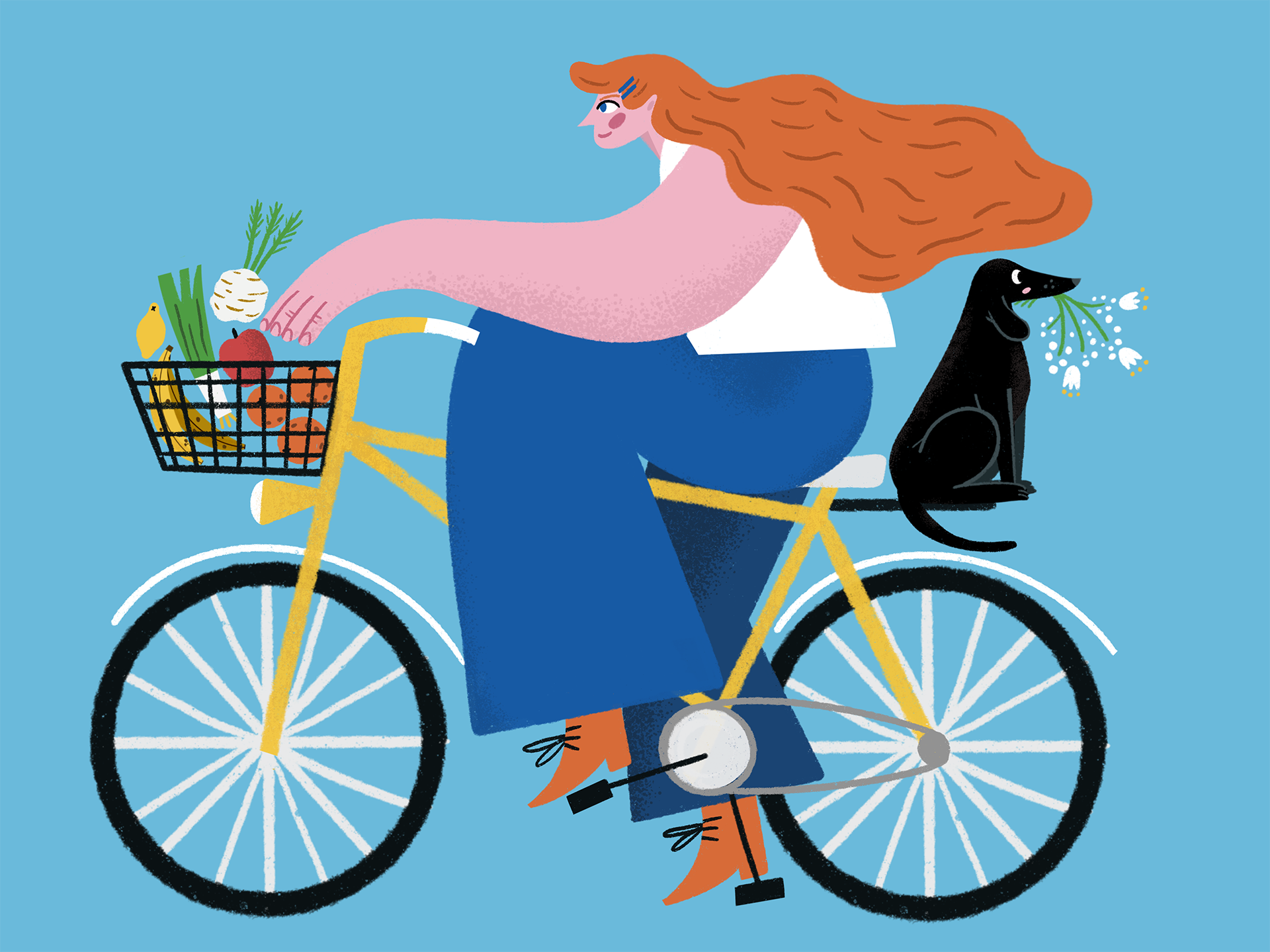
What are your plans for the near future? What areas would you like to focus on?
For now, there are a few exciting projects in the pipeline—including a storybook waiting to be published, which I really hope will come together. In the long term, it would be nice to move a bit from the applied field into the fine arts: this year, I was invited by the Strand Festival to do a large-scale painting, which was a great experience, and I would love to have more time to do this.
Last year, I also completed a bachelor’s degree in psychology, which I plan to continue next year—I feel it brings together my interests, which stem from my general tendency towards (self-)reflection and analytical thinking. For the time being, the psychological framework is more of an infusion and shaping of my thinking, but I don’t rule out the possibility of engaging with it more seriously in the future.

Dorottya Kránicz | Instagram
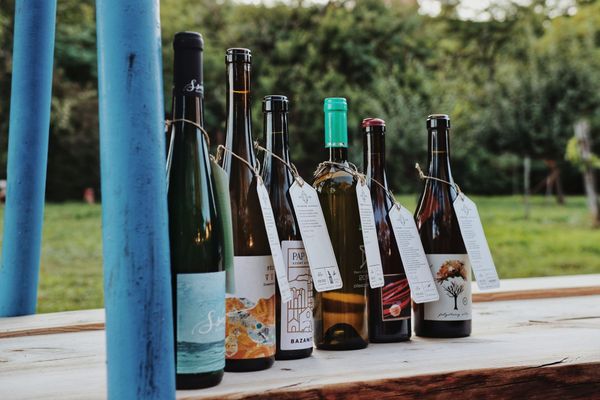
Magnificent pairing: contemporary poems with contemporary wines

Wes Anderson has transformed an entire French city for his latest film










